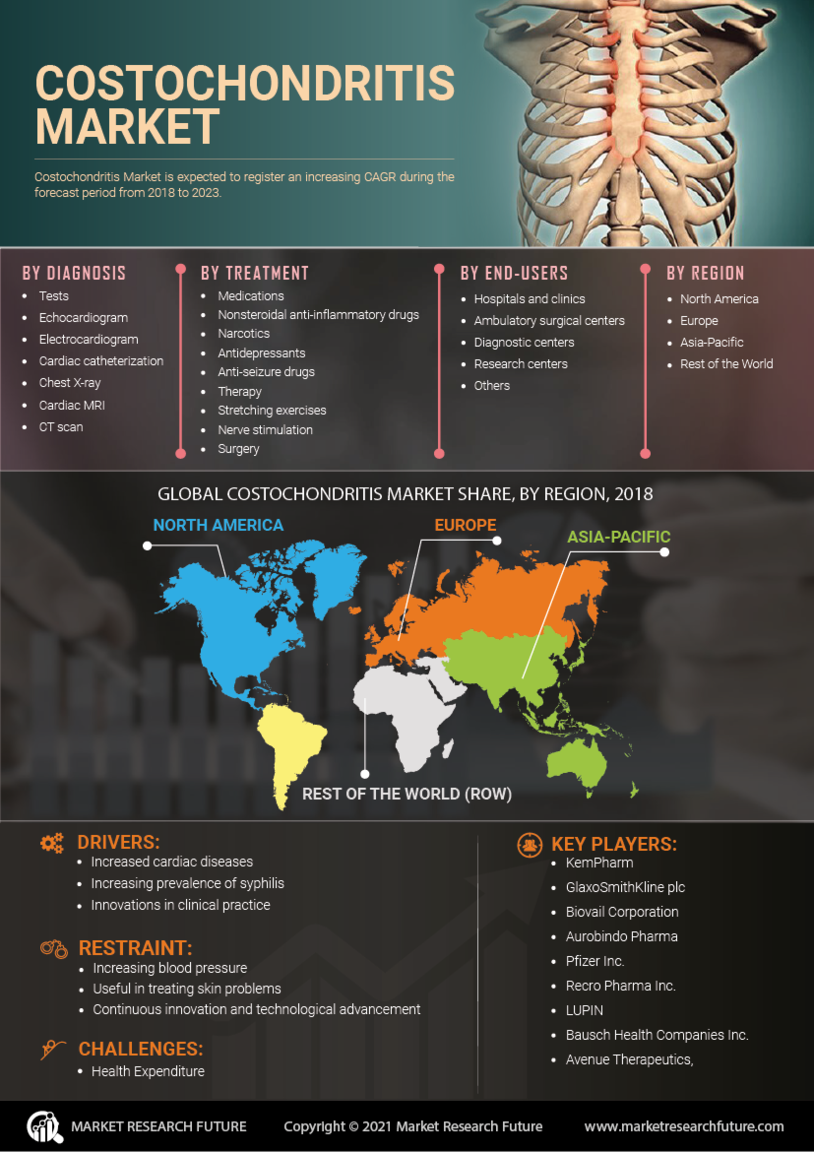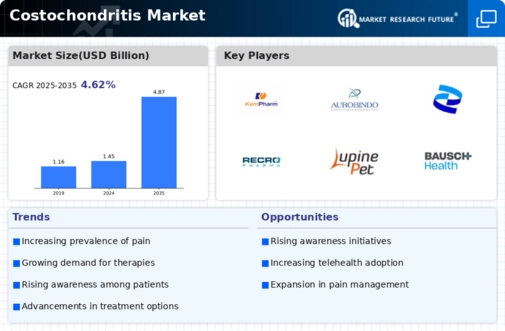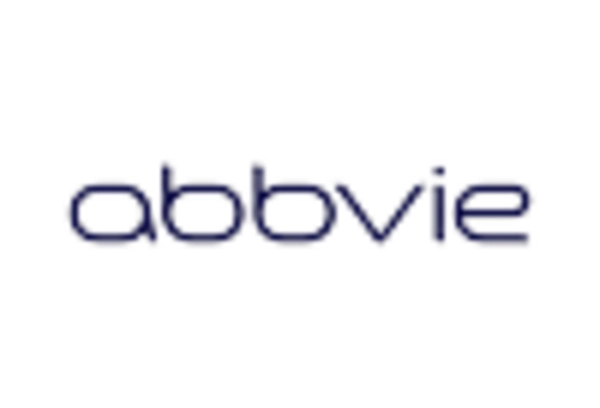Rising Healthcare Expenditure
Rising healthcare expenditure is another significant driver of the Costochondritis Market. As countries allocate more resources to healthcare, there is an increased focus on the management of chronic conditions, including costochondritis. Higher healthcare spending often translates to improved access to medical services, including diagnostic tests and treatment options. This trend is particularly evident in regions where healthcare reforms are underway, leading to enhanced patient access to specialized care. Consequently, as more individuals seek treatment for costochondritis, the demand for healthcare services and products related to this condition is expected to rise. This increase in expenditure may also encourage pharmaceutical companies to invest in research and development, potentially leading to the introduction of new therapies in the Costochondritis Market.
Advancements in Diagnostic Techniques
Advancements in diagnostic techniques are significantly impacting the Costochondritis Market. Enhanced imaging technologies, such as MRI and ultrasound, allow for more accurate identification of costochondritis, distinguishing it from other potential causes of chest pain. This improved diagnostic capability is crucial, as misdiagnosis can lead to unnecessary treatments and patient anxiety. As healthcare providers adopt these advanced diagnostic tools, the rate of confirmed costochondritis cases is likely to rise, leading to increased treatment demand. Moreover, the integration of artificial intelligence in diagnostic processes may further streamline patient evaluation, potentially increasing the efficiency of care delivery in the Costochondritis Market. This trend suggests a promising future for both patients and healthcare providers, as accurate diagnosis is fundamental to effective treatment.
Increasing Incidence of Costochondritis
The rising incidence of costochondritis is a notable driver in the Costochondritis Market. Recent studies indicate that the prevalence of this condition has been increasing, particularly among individuals aged 30 to 50. This trend may be attributed to various factors, including lifestyle changes and increased physical activity, which can lead to chest pain and inflammation of the costal cartilage. As more individuals seek medical attention for chest pain, healthcare providers are likely to diagnose costochondritis more frequently. Consequently, this growing patient population is expected to drive demand for treatment options, thereby expanding the Costochondritis Market. Furthermore, the increased awareness of musculoskeletal disorders among healthcare professionals may contribute to more accurate diagnoses, further influencing market growth.
Enhanced Patient Education and Support Programs
Enhanced patient education and support programs are emerging as a vital driver in the Costochondritis Market. As awareness of costochondritis grows, healthcare providers are increasingly implementing educational initiatives aimed at informing patients about the condition, its symptoms, and available treatment options. These programs not only empower patients to seek timely medical attention but also promote adherence to prescribed therapies. Furthermore, support groups and online resources are becoming more prevalent, providing patients with a platform to share experiences and coping strategies. This increased focus on patient education is likely to lead to earlier diagnoses and improved treatment outcomes, thereby driving growth in the Costochondritis Market. As patients become more informed, they may also advocate for better healthcare services, further influencing market dynamics.
Growing Demand for Non-Invasive Treatment Options
The growing demand for non-invasive treatment options is a key driver in the Costochondritis Market. Patients increasingly prefer treatments that minimize surgical intervention and associated risks. Non-invasive therapies, such as physical therapy, corticosteroid injections, and over-the-counter pain relievers, are gaining popularity due to their effectiveness and lower risk profiles. This shift in patient preference is likely to influence the development of new treatment modalities and the marketing strategies of pharmaceutical companies. Additionally, the increasing focus on patient-centered care is prompting healthcare providers to explore and recommend non-invasive options, further driving the Costochondritis Market. As a result, the market may witness a rise in innovative non-invasive therapies tailored to meet patient needs.

















Leave a Comment